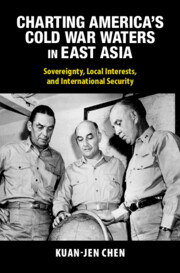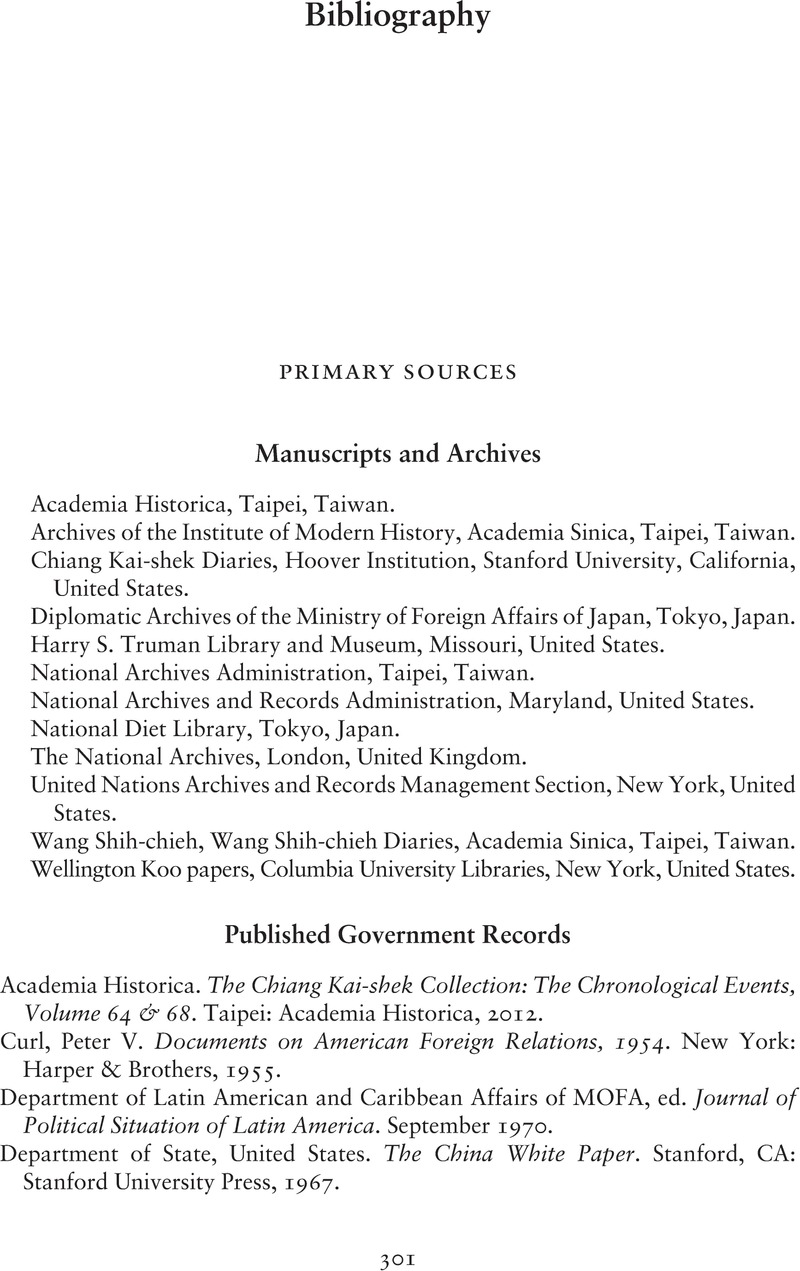 Charting America's Cold War Waters in East Asia
Charting America's Cold War Waters in East Asia Book contents
- Charting America’s Cold War Waters in East Asia
- Cambridge Studies in US Foreign Relations
- Charting America’s Cold War Waters in East Asia
- Copyright page
- Contents
- Figures, Tables, and Maps
- Abbreviations
- Conventions
- Acknowledgements
- Introduction
- 1 Finding a Local Partner in Post-war Maritime East Asia
- 2 The Creation of a Mainland-Based Forward Strategy
- 3 Vying for Top Dog: The Navy–Army Struggle in Maritime East Asia
- 4 Termination of the Mainland-Based Forward Strategy
- 5 The 1950 Crises and America’s Changing Posture of Defence
- 6 The Making of a New Maritime Strategy
- 7 The International Law of the Sea and America’s Unreliable Partners
- 8 America’s Strange Bedfellows in the International Arena
- 9 Fishing for Protein in Cold War East Asia
- 10 Jostling for Position: Black Gold, Natural Resource Exploration, and Shifting Political Contours
- Epilogue
- Bibliography
- Index
- References
Bibliography
Published online by Cambridge University Press: 23 May 2024
- Charting America’s Cold War Waters in East Asia
- Cambridge Studies in US Foreign Relations
- Charting America’s Cold War Waters in East Asia
- Copyright page
- Contents
- Figures, Tables, and Maps
- Abbreviations
- Conventions
- Acknowledgements
- Introduction
- 1 Finding a Local Partner in Post-war Maritime East Asia
- 2 The Creation of a Mainland-Based Forward Strategy
- 3 Vying for Top Dog: The Navy–Army Struggle in Maritime East Asia
- 4 Termination of the Mainland-Based Forward Strategy
- 5 The 1950 Crises and America’s Changing Posture of Defence
- 6 The Making of a New Maritime Strategy
- 7 The International Law of the Sea and America’s Unreliable Partners
- 8 America’s Strange Bedfellows in the International Arena
- 9 Fishing for Protein in Cold War East Asia
- 10 Jostling for Position: Black Gold, Natural Resource Exploration, and Shifting Political Contours
- Epilogue
- Bibliography
- Index
- References
Summary

- Type
- Chapter
- Information
- Charting America's Cold War Waters in East AsiaSovereignty, Local Interests, and International Security, pp. 301 - 318Publisher: Cambridge University PressPrint publication year: 2024


